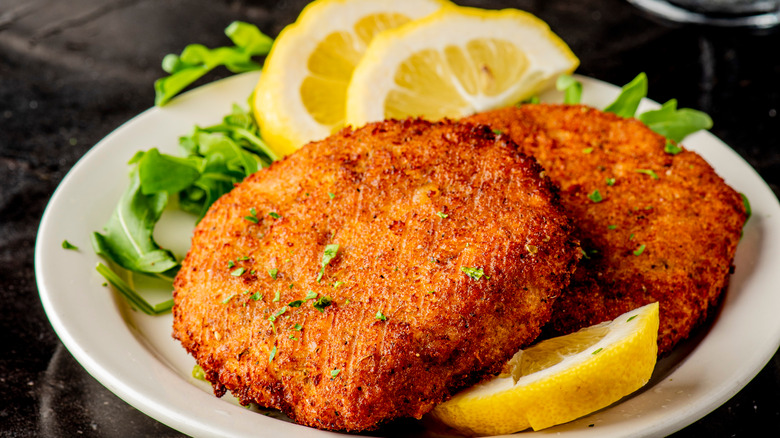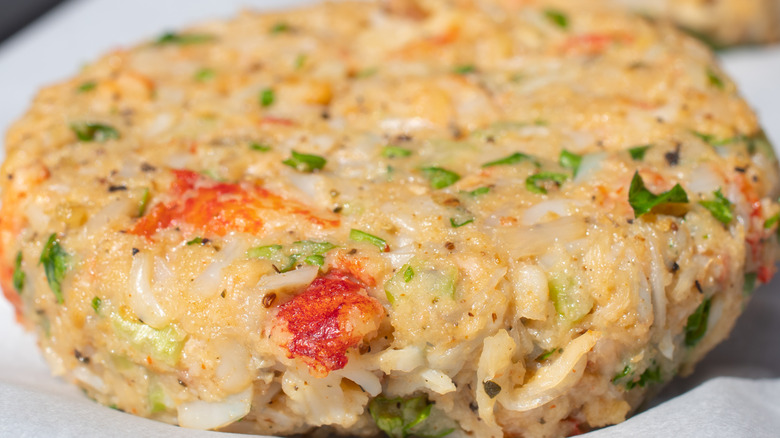The Indigenous Origins Of The Humble Crab Cake
The blue crab is an icon of Chesapeake Bay. Identified by their bright blue claws, four pairs of legs, and rear, flipper-like paddles on their back legs, blue crabs are big business. In Maryland alone, commercial landings of blue crabs have topped $45 million in sales. Virginia is not far behind, averaging between $22 million to $38 million annually (via Chesapeake Bay Foundation). If you're visualizing Mr. Krabs drooling over an enormous pile of money, the image is certainly appropriate. These colorful and profitable little crustaceans are beloved by coastal-dwelling Marylanders and Virginians alike for one very specific reason — blue crabs are the star ingredient of crab cakes.
Yes, the mini, but mighty, crab cake. Beloved by millions, crab cakes are a crucial component of the local diet and also one that can cause a scuffle or two. As John Shields writes, "I've witnessed barroom brawls over which restaurant or tavern serves the best crab cake. Research on the ubiquitous cake provides tremendous pleasure for the stomach, but is, all in all, a dangerous business" (via The Baltimore Sun). For all the division over whose carb cake is best, there is no dispute over who originated the crab cake — Native Americans.
Developing a culinary classic
Though they may have been made far earlier, our current knowledge dates the start of making crab cakes to at least the 16th century. According to the Baltimore Sun, Native American women would take crabmeat, vegetables, and cornmeal, mix them all together, portion out the mixture into small balls, and fry them in hot bear fat. Despite replacing bear fat with other cooking methods, like broiling, the basic framework of crabcake construction has remained practically unchanged.
It is reckoned that crab cakes were among the earliest recipes that the colonists adopted from the native population. Over centuries, crab cakes have evolved into a culinary staple so ingrained with the Chesapeake region that the two cannot be separated. According to The Crab Shack, two different methods of making crab cakes exist in the bay. On the eastern shore, crabmeat is mixed together with egg and flour, along with other spices to help hide the strong flavor of the crab. Western shore or continental, crab cakes use a simple combination of egg, crackers, or bread crumbs, and leave the crab meat to sing for itself. Regardless, you're in for one tasty snack.

